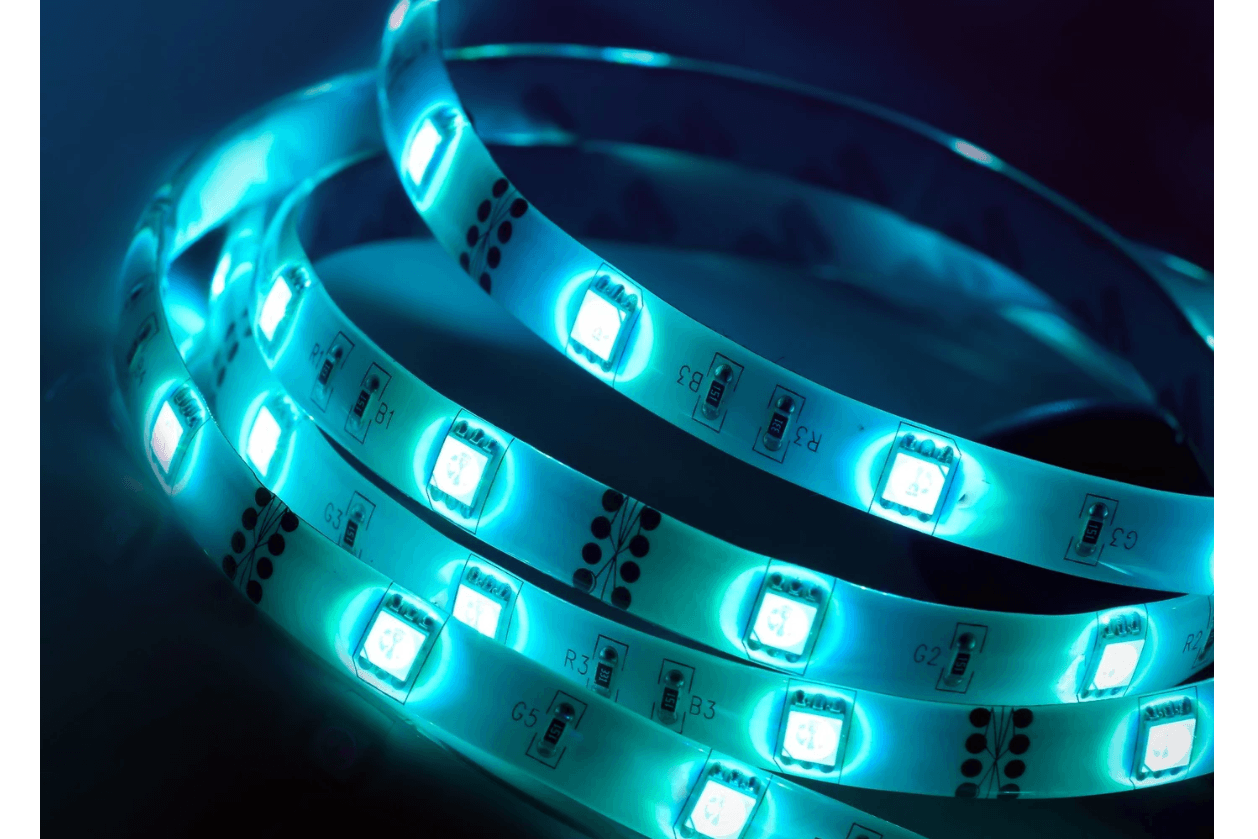Light-emitting diodes (LEDs) have become a lighting mainstay in recent years. But did you know these lighting powerhouses have been around for more than half a century? Oct. 9, 2017, will mark the 55th anniversary of General Electric scientist Nick Holonyak Jr.’s creation of the first practical visible-spectrum LED.
When Holonyak created the LED light in 1962, his GE colleagues called it “the magic one” because its light, unlike infrared lasers, was visible to the human eye. Even more surprising, Holonyak wasn’t trying to create a light that would replace incandescent bulbs; his goal was to make a visible semiconductor laser.
All these years later, LED lights are used almost everywhere — from trade show and exhibit lighting to signage and displays to even LED eyelashes!
How Do LED Lights Work?
LED lights aren’t like incandescent bulbs, which generate light when an electric current passes through a tungsten filament. Those filaments have to be heated to a temperature that produces light, which is why incandescent bulbs are so warm to the touch.
Instead, LED lights are illuminated solely by the movement of electrons in the semiconductor material. No extra heat or energy is produced — which gives LED lights their energy efficiency and extremely long life. Holonyak has called the LED the “ultimate lamp” because “the current itself is the light.”
How to Determine LED Quality
A core component of LED lights is the LED chip, which is responsible for creating light. For example, an LED light strip can have hundreds of LED chips.
But unfortunately, unless you have deep LED knowledge, you can’t tell simply by looking at two chips which is better quality.
One of the best ways to determine LED chip quality is to check whether the products are UL-listed or UL-certified. UL stands for Underwriters Laboratories, one of the world’s largest and most respected consumer safety organizations. When you see a UL logo it means the product has undergone extensive testing and adheres to high standards. Many HitLights products carry the official UL mark.
If you’re looking at LED strip lights, another way to determine quality is by looking at the thickness of the board the LED lights are printed on. Thinner materials are more fragile, while thicker materials, like those HitLights uses, are more durable.
Why LED Lights Are Better
On the 50th anniversary of his creation in 2012, Holonyak was handling a new GE 27-watt LED bulb designed to replace a 100-watt equivalent bulb when he said “I thought it would be clumsier.”
The compact size of LED lights is a top reason why they’re so popular. They can fit in small spaces like underneath shelving or retail displays and even around windows to draw attention to businesses.
LEDs are also extremely energy efficient. Incandescent lights need about 10 times more power to heat up the filament. Plus, LEDs don’t put out heat because the electricity moving through it is directly responsible for putting out the light. So aside from needing less power for the light itself, you’ll also end up spending less money and needing less energy to run air conditioning to offset the heat generated by non-LED lights.
LED Lighting Trends
Holonyak said in 2012 that he thought LED adoption “would happen much quicker than 50 years.” But now, as LEDs continue to gain in popularity, new uses and trends are quickly appearing.
Addressable LED light strips are one of the newest lighting trends. Software is used to program each individual LED chip, which means you can create a variety of eye-popping effects like multicolor light pulses or northern lights effects.
RGBW LED strips are another hot LED light trend. These have red, green, blue and white lights built into strips. Unlike RGB strips that could only simulate white, RGBW strips create brighter and truer white colors.
Shop the latest LED lights and accessories.
About HitLights
HitLights delivers LED lighting solutions for event exhibits, displays, signs, theater and film productions, and manufacturing. CEO Bin Yu formed the company through the Louisiana State University Business Incubator Program in 2010. Since then HitLights has grown to become a major player the LED industry. Customers come to HitLights for quality products, helpful customer service and creative solutions.


1 comment
James Hesson
Awesome products with great service. Jim